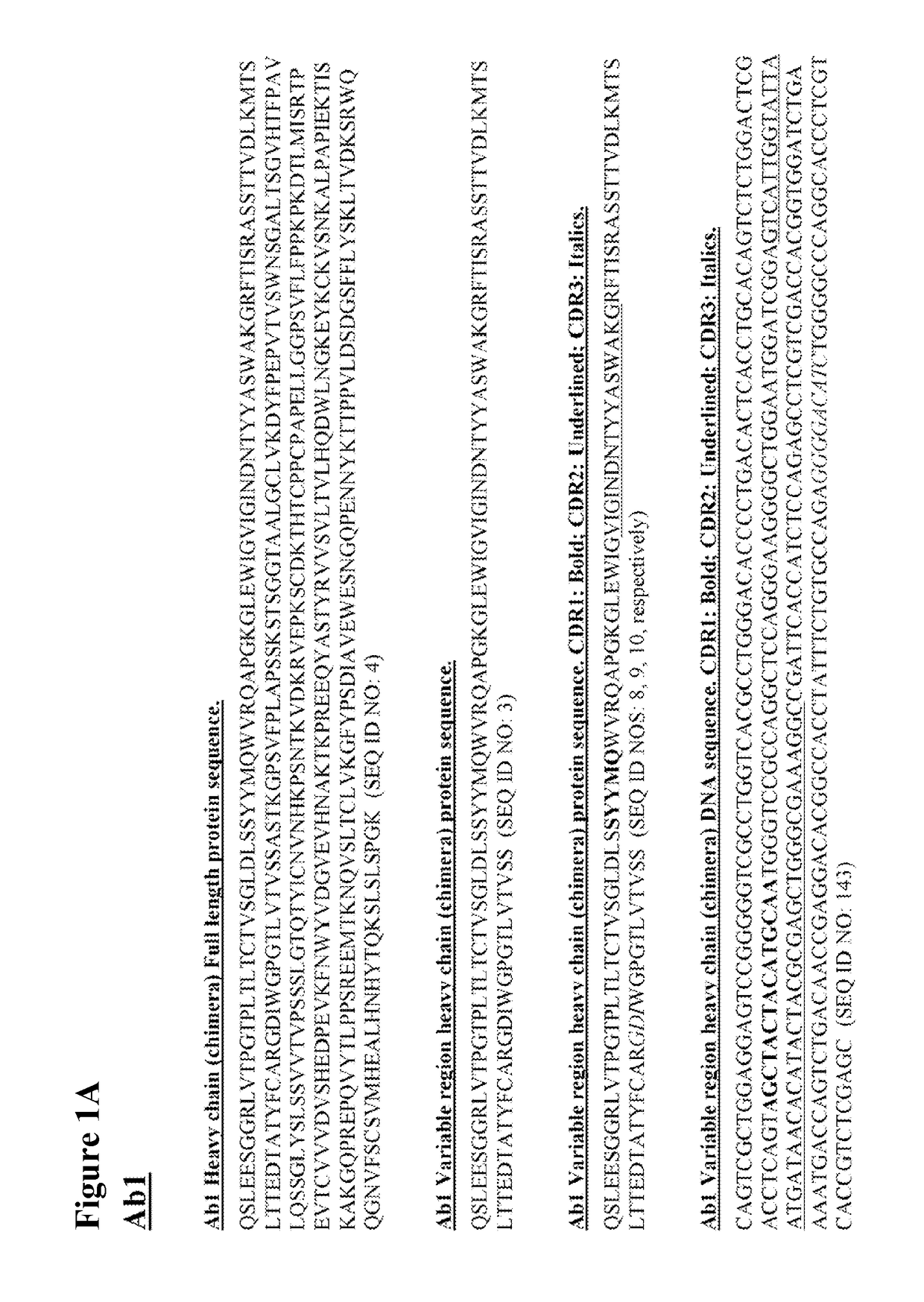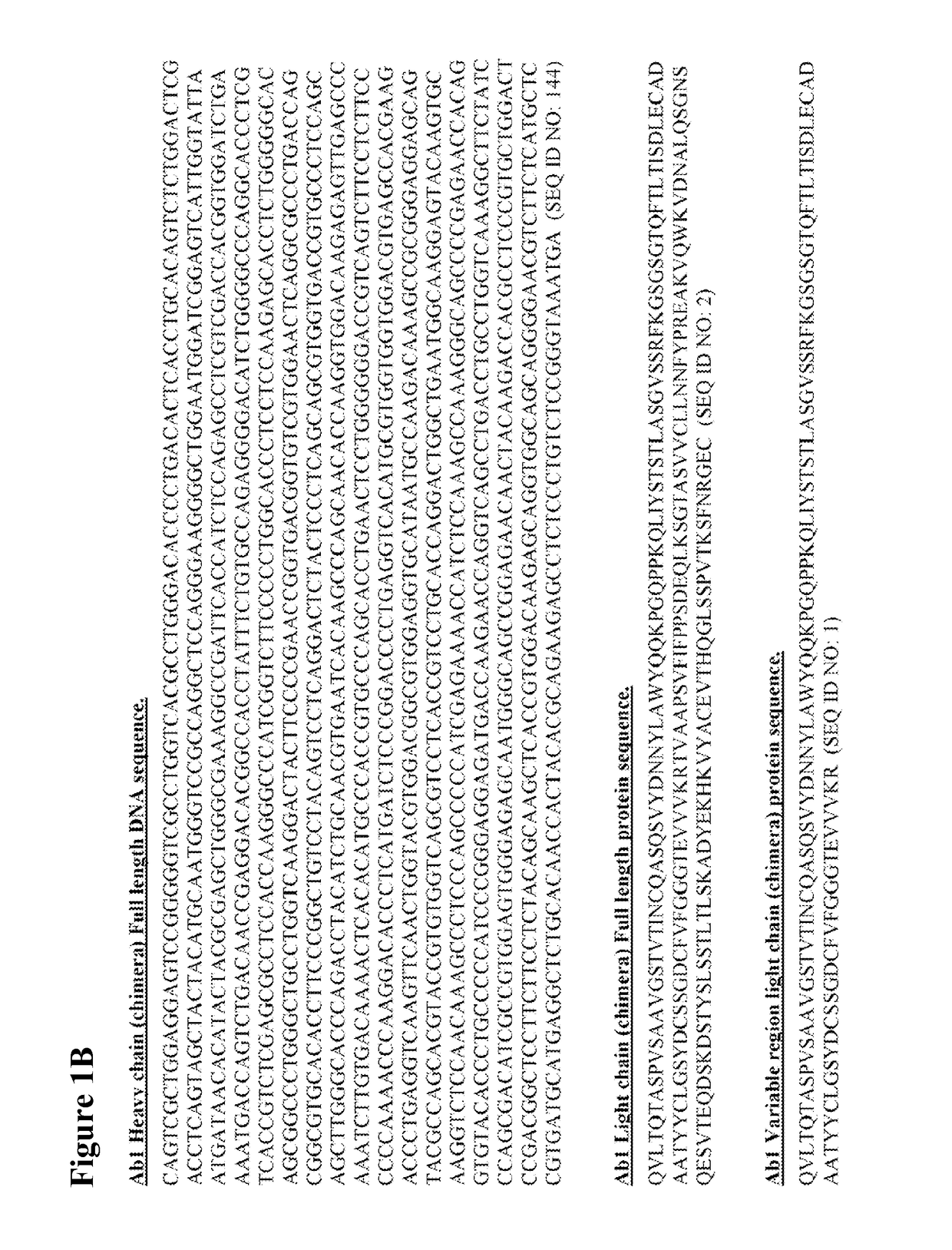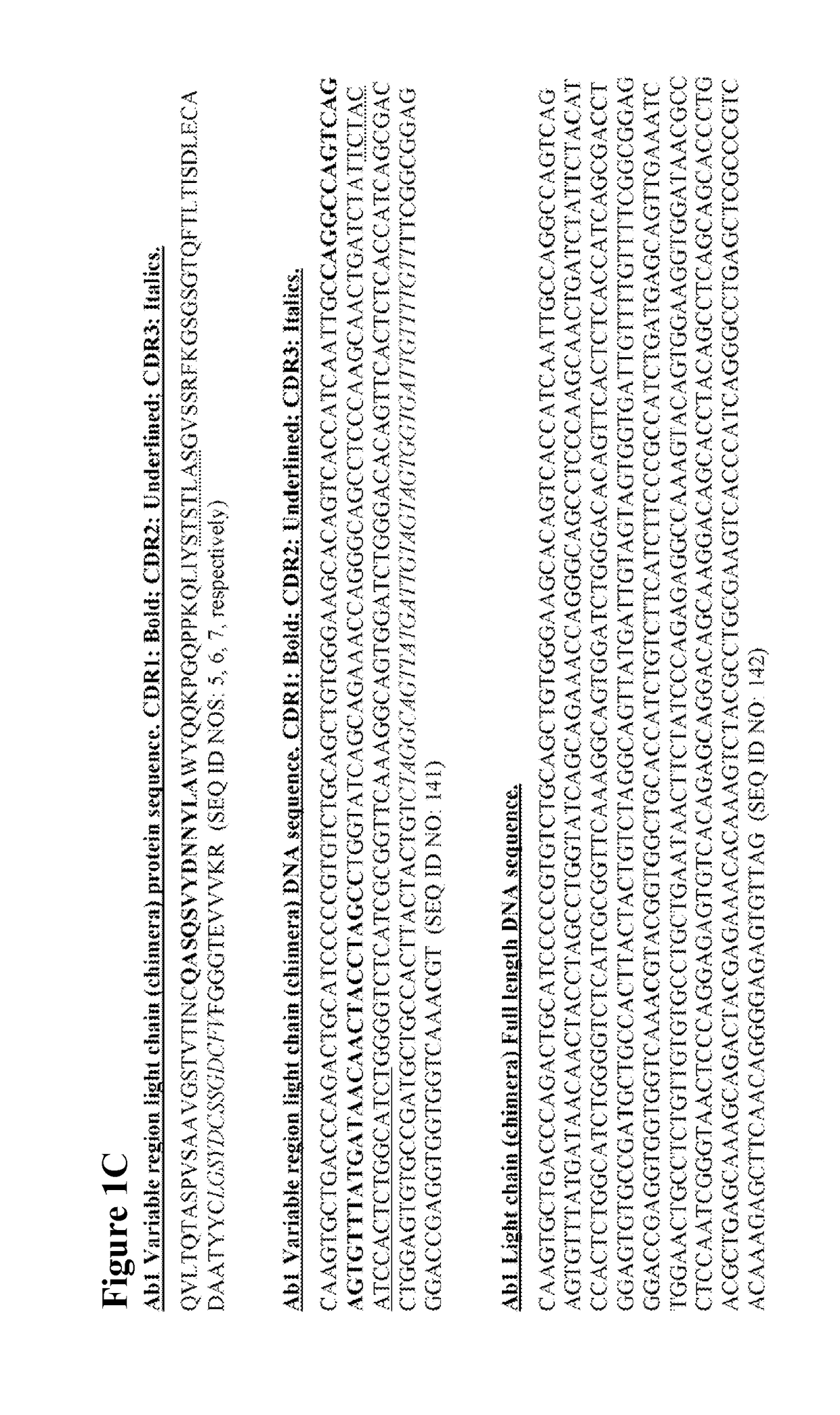Use of anti-CGRP antibodies and antibody fragments to treat diarrhea in subjects with diseases or treatments that result in elevated CGRP levels
an anti-cgrp antibody and antibody fragment technology, which is applied in the field of use of anti-cgrp antibodies and antibody fragments to treat diarrhea, can solve the problems of rarely preventing successful rehydration, dehydration and electrolyte imbalance, etc., and achieves the effect of effective treatment or prevention of diarrhea, increased cgrp levels, and increased levels
- Summary
- Abstract
- Description
- Claims
- Application Information
AI Technical Summary
Benefits of technology
Problems solved by technology
Method used
Image
Examples
example 1
Preparation of Antibodies that Bind CGRP
[0697]By using the antibody selection protocol described herein, one can generate an extensive panel of antibodies.
Immunization Strategy
[0698]Rabbits were immunized with human CGRP□ (American Peptides, Sunnyvale Calif. and Bachem, Torrance Calif.). Immunization consisted of a first subcutaneous (sc) injection of 100 μg of antigen mixed with 100 μg of KLH in complete Freund's adjuvant (CFA) (Sigma) followed by two boosts, two weeks apart each containing 50 μg antigen mixed with 50 μg in incomplete Freund's adjuvant (IFA) (Sigma). Animals were bled on day 55, and serum titers were determined by ELISA (antigen recognition) and by inhibition of CGRP driven cAMP increase in SK-N-MC.
Antibody Selection Titer Assessment
[0699]To identify and characterize antibodies that bind to human CGRP□, antibody-containing solutions were tested by ELISA. Briefly, neutravidin coated plates (Thermo Scientific), were coated with N-term biotinylated human CGRP□ (50 □L ...
example 2
Enzymatic Production of Fab Fragments
[0722]Papain digestions were conducted using immobilized papain (Thermo / Pierce) as per manufacturer's instructions. Briefly, purified antibodies were incubated in a cystein / HCl-containing buffer with immobilized papain at 37° C. with gentle rocking. The digestion was monitored by taking an aliquot and analyzing using SDS-PAGE for cleavage of the heavy chain. To stop the reaction, the immobilized papain was spun out and washed using 50 mM Tris pH 7.5 and filtered. Undigested full length antibody and Fc fragments were removed by using a MabSelectSure (GE) column.
example 3
Construction of Pichia pastoris Expression Vectors for Heavy and Light Chain.
[0723]The humanized light and heavy chain fragments were commercially synthesized and subcloned into a pGAP expression vector. The pGAP expression vector uses the GAP promoter to drive expression of the immunoglobulin chain and the human serum albumin (HSA) leader sequence for export. In addition, this vector contains common elements such as a bacterial origin of replication, and a copy of the kanamycin resistance gene which confers resistance to the antibiotic G418 in P. pastoris. G418 provides a means of selection for strains that contain the desired expression vector integrated into their genome.
Transformation of Expression Vectors into Haploid Met1 and Lys3 Host Strains of Pichia pastoris
[0724]All methods used for transformation of haploid P. pastoris strains and manipulation of the P. pastoris sexual cycle were done as described in Pichia Protocols (Methods in Molecular Biology Hi...
PUM
| Property | Measurement | Unit |
|---|---|---|
| molecular weight | aaaaa | aaaaa |
| molecular weight | aaaaa | aaaaa |
| molecular weight | aaaaa | aaaaa |
Abstract
Description
Claims
Application Information
 Login to View More
Login to View More - R&D
- Intellectual Property
- Life Sciences
- Materials
- Tech Scout
- Unparalleled Data Quality
- Higher Quality Content
- 60% Fewer Hallucinations
Browse by: Latest US Patents, China's latest patents, Technical Efficacy Thesaurus, Application Domain, Technology Topic, Popular Technical Reports.
© 2025 PatSnap. All rights reserved.Legal|Privacy policy|Modern Slavery Act Transparency Statement|Sitemap|About US| Contact US: help@patsnap.com



